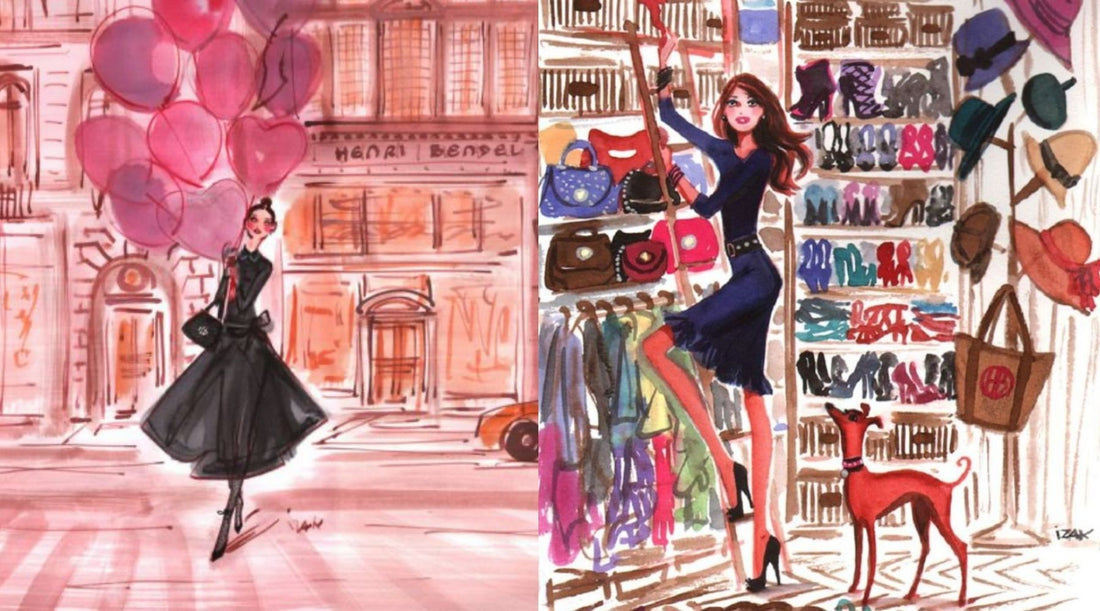
BUT WHAT'S THE STORY?
Priti MoudgillShare
When tech met tulle.
She was young, stylish, and clearly very busy. Her name was Amber, and her office window overlooked Fifth Avenue. From her quiet confidence, you could tell she had a lot of say in what got stocked in one of New York’s chicest stores. At the time, there was a holy trinity of fashion retail: Bendel, Bergdorf, and Barneys, and she was pretty much at the center of it.
And there I was, an engineer who had somehow landed in the heart of the fashion industry, sitting opposite her.
What happened was this: just a few days back I was at a photo shoot for a tool I had just licensed, and an executive at that company noticed what I was wearing - something I had created for myself. “You could sell that on Fifth Avenue,” she said. And just like that, the conversation shifted. “Why don’t you go to the Henri Bendel cattle call?”
Now, if you hung out in New York CIty often enough, you knew what that meant. Twice a year, Bendel’s held open calls for designers. The line - full of hopefuls and soon-to-be-somethings - would stretch around the block. I had seen it. I had even chatted with some of the designers in line (because in New York, when you see a long line, you either blindly join it or ask what it’s for). I knew I wasn’t going to be one of those people, cooling my heels for hours on the sidewalk. So I did something different.
From the comfort of my office, I emailed a photo of my design.
And they wrote back pretty much instantly. They invited me in.
That wasn’t the first time a cold email had worked in my favor. But there I was, sitting across from this powerful buyer, showing her what I had made. She looked at it, looked back at me, and asked,
“But what’s the story?”
I had no idea what she meant.
Then she threw another question at me, “Where’s the line sheet?”
Now I really had no idea what she meant.
Patiently - but visibly annoyed - she explained. “You don’t just show up with a product. You show up with a line. It has to tell a story. There needs to be cohesion, variety, colorways, structure. Give me this piece in ten colors. Give me three patterns in each. Then we have something.”
That’s when I got my first lesson in merchandising. I went home, and Googled “line sheet.”
What I Learned
When you’re a licensor, you build a product and the company you license it to takes care of the rest: manufacturing, branding, distribution, selling. You just get a check periodically, and the ability to audit their books. But when you step into manufacturing and wholesale, the rules are very different, especially in the fashion industry.
You can’t just walk in with a single product and expect it to land on a luxury retail shelf. Because even if the product is strong, the effort required to sell just one thing is huge: for you and for the store. Buyers want options. They want repeat customers. They want a system.
That was the first time I realized:
If you’re going to invest time and energy into marketing a product, you’d better have a full offering behind it, not just a one-off.
But here’s the balance: too few choices, and you don’t give buyers enough to engage with. Too many, and they get overwhelmed and walk away.
Retail success lives in that balancing act: between consistency and choice, simplicity and depth.
🛍️ The Store That Made Me Stay
Before I ever sold at Bendel, I had visited as a customer, and been completely mesmerized. Not just by the products, but by the store itself.
The illustrations of Izak Zenou that lined the packaging and decor made everything feel like it had a personality, a point of view. The iconic Bendel Girl, stylish and expressive, captured something aspirational and intimate at the same time.
Then there were their legendary pop-ups including one with two designer-cobblers who looked like Parisian models, but were expert shoe-makers who handcrafted sandals right there in the atrium of the store. It was magic. Upstairs, there was a cozy café, and many an evening ended with coffee and chocolate croissants shared with friends. Henri Bendel was a place of discovery. I knew I wanted in.
And I did sell there. Many times. But first I had to learn to speak Prada.
From Product to Perspective
That moment - “What’s the story?” - taught me more than just how to pitch a fashion product. It shifted the way I think about launching anything.
Back then, I was just starting to understand the logic of a line: the importance of building a platform, not just a product. I’ve worn many hats: licensor, manufacturer, wholesaler. And now, I’ve entered the DTC world - which has brought me right back to that same question.
Except now, there’s a new layer.
They say: Don’t launch with too many products at once. Go slow. Build interest. Stay focused. And yet, that old lesson still echoes: If you’re going to invest effort into marketing, make it count across more than just one item.
So I’m balancing both: the discipline of a slow release with the intention of building a bigger story. Because even if I’m launching one product at a time, it’s not in isolation. It’s part of something larger: a system, a vision, a platform.
Because one great product is a start.
But a platform? That’s how you build momentum.
